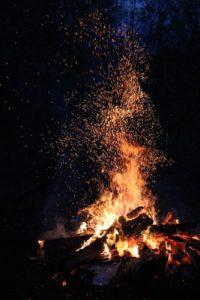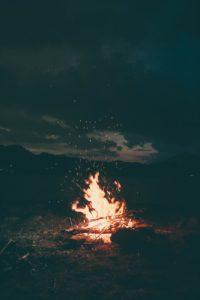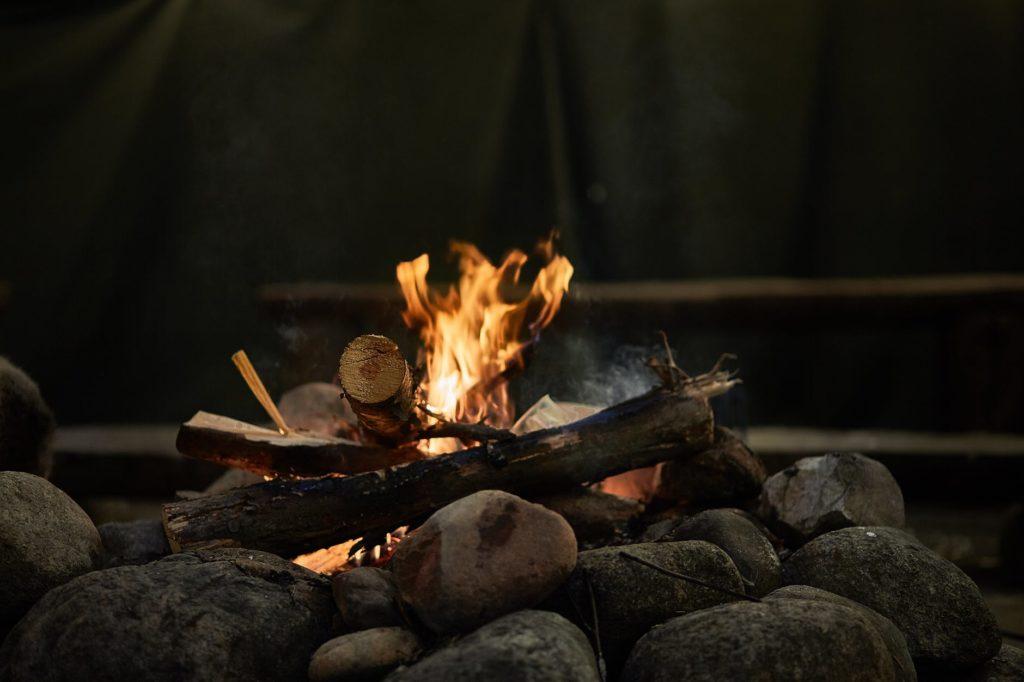While Brockley works to keep trees alive, we also understand the need for them in your home’s wood-burning stove or fireplace. What firewood should you be burning as fuel during winter? What you choose can make a big difference because not all trees burn the same, and not all wood is ready to burn!
What Makes Good Firewood?
 Good firewood should both be seasoned and have a high BTU rating. BTU stands for “British thermal unit,” and this is the amount of energy required to heat one pound of liquid water by one degree Fahrenheit. It’s a common way of measuring heat output, and the higher the BTUs, the more heat you’ll get from the firewood. Seasoning the wood increased the BTUs; green, moisture-heavy wood has lower BTUs generated by the fire because the heat expends more energy evaporating the moisture.
Good firewood should both be seasoned and have a high BTU rating. BTU stands for “British thermal unit,” and this is the amount of energy required to heat one pound of liquid water by one degree Fahrenheit. It’s a common way of measuring heat output, and the higher the BTUs, the more heat you’ll get from the firewood. Seasoning the wood increased the BTUs; green, moisture-heavy wood has lower BTUs generated by the fire because the heat expends more energy evaporating the moisture.
Speaking of seasoning, the condition of the firewood is also important. Seasoned wood has a moisture content of 20% or less; to ensure this, you should cut, split and pile the firewood for at least a year before burning. Once it has been seasoned, the wood will produce more heat and less smoke and creosote build-up in the chimney. The fire in unseasoned wood has to work harder to evaporate the internal moisture, making it more difficult to light and producing more smoke when it does go up.
Top Ten Firewood Choices
Certain trees produce better-seasoned firewood that will have higher BTUs than others. Here are the top ten firewood choices for this winter, whether for your wood stove or on the hearth from the Ontario Woodlot Association:
- Rock Elm – 32.0
- Shagbark Hickory – 30.6
- White Oak – 30.6
- Sugar Maple – 29.0
- Beech – 27.8
- Red Oak – 27.3
- Yellow Birch – 26.2
- White Ash – 25.0
- White Elm – 24.5
- Red Maple – 24.0
 Some of these are harder to find than others because of growth patterns across Ontario. For example, you’re more likely to find White Oak and Sugar Maple firewood in the London area than Rock Elm or Shagbark Hickory.
Some of these are harder to find than others because of growth patterns across Ontario. For example, you’re more likely to find White Oak and Sugar Maple firewood in the London area than Rock Elm or Shagbark Hickory.
Other woods are easier to ignite. White Oak, for example, requires a lot of kindling to get going, but will burn slowly and generate more heat; Yellow Birch, by contrast, ignites and burns quickly. It’s not always the case that the higher the BTUs, the slower the burn; Sugar Maple will burn slower than White Oak, but give off less heat.
Hardwood Versus Softwood
 You might notice that the previous list is all hardwood trees. These are better for burning because softwoods like pine don’t give off heat as efficiently and leave more residue behind. Burning softwood can increase the buildup of dangerous creosote in the chimney, forcing you to clean it more frequently.
You might notice that the previous list is all hardwood trees. These are better for burning because softwoods like pine don’t give off heat as efficiently and leave more residue behind. Burning softwood can increase the buildup of dangerous creosote in the chimney, forcing you to clean it more frequently.
Softwoods are also less efficient. While a pound of dense hardwood has roughly the same amount of energy as a pound of light softwood, wood density makes the pound of hardwood smaller. A full cord of the more dense hardwood will have more energy than a cord of less dense softwood, making hardwood more efficient for storing and burning.

